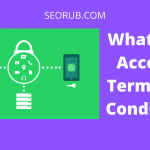Pradhan Mantri Shram Yogi Maan-dhan – announced in the budget 2019 for unorganized sector workers..
🎯 Key Factors:
(1)The scheme will come into force from 15 February, 2019.
(2) This Scheme shall apply to the unorganised workers like street vendors, mid-day meal workers, head loaders, brick kiln workers, cobblers, rag pickers, domestic workers, washer men, rickshaw pullers, landless labourers, own account workers, agricultural workers, construction workers, beedi workers, handloom workers, leather workers, audio- visual workers and similar other occupations.
(3) To join the mega pension scheme, the monthly income of unorganised worker should not exceed Rs 15,000.
(4)The eligible person should have a savings bank account and Aadhaar number.
(5) The age of worker should not be less than 18 years and not more than 40 years of age.
(6) A worker will not be eligible if he/she is already a member of other pension schemes – National Pension Scheme (NPS) .
(7) In case of default on payment contributions, the eligible subscriber will be allowed to regularise his/her contributions by paying the outstanding dues along with interest.
(8) If the subscriber wishes to exit the scheme, within ten years of date of joining, then only his share of contribution will be returned to him along with savings bank interest rate.
(9) If the eligible subscriber dies due to any cause, then the spouse shall have an option to continue the scheme by making regular contribution or exit the scheme by receiving share of contribution paid by the subscriber along with accumulated interest or savings bank interest rate, whichever is higher.
(10) The minimum monthly pension assured in the scheme is Rs 3000 which will be paid to the subscriber after attaining the age of 60 years.
(11) During the years when pension is received by subscriber, if he/she dies, then spouse shall be eligible to receive 50 per cent of the pension received by the subscriber. Children of the subscriber will not be allowed to receive any pension benefit after his/her death.
How to cancel the contribution of pmsym?
PM-SYM is a voluntary and contributory pension scheme on a 50:50 basis where prescribed age-specific.
Family pension is applicable only to spouse.
Contribution by the Unorganised Workers (UW) Subscriber (a.k.a. Group of Workers).
The objective of this article is to clarify information on contributions paid by the Central Government (C.G.) in PM-SYM scheme, which are collected by Central Government Employees Pension Fund (CGEPF), and subsequently distributed to beneficiaries through the Scheme Producers’ Association (SPA).
The explanation provided here should be useful for those who wish to understand various aspects of PM-SYM.
Scheme of Pension Scheme for unorganised workers
The Central Government has decided to increase the age of compulsory pension scheme from 60 years to 65 years from 1st April, 2017. The current age of compulsory pension scheme is 60 years and the decision will result in a change in contributory pension scheme for UOI Scheme.
The Central Government has decided to increase the age of compulsory pension scheme from 60 years to 65 years from 1st April, 2017. The decision will result in a change in contributory pension scheme for UOI Scheme.
The last time when the Age of Contribution was increased was 2003-2004 when it was increased to 62 years. In view of this the age of contribution should be increased further. Since there is no difference between contribution by self-employed workers and those who are unorganized workers, we recommend that both groups contribute jointly to the same contributory pension scheme for their own benefit (that is, their family members).
The Central Government has decided to increase the Age of Contribution to 62 years from 1st April, 2017. The decision will result in a change in contributory pension scheme for UOI Scheme.
In view of this the age of contribution should be increased further because there is no difference between contribution by self-employed workers and those who are unorganized workers, but they have already contributed more than twice as much than their parents’ generation did over our life span (that is, when they were working). It is recommended that both groups contribute jointly to a single contributory pension scheme for their own benefit (that is, their family members).
Benefit from PM-SYM
The contribution by PM-SYM (Public Provident Fund – SYM) is mandatory. It is a voluntary contributory pension scheme where prescribed age-specific, and family pension is applicable only to spouse.
The contribution by UW (Unorganised Workers) Subscriber is voluntary and contributory only.
There are two types of contributions: One by the employer, the other by the worker. Contributions by the employer are estimated based upon gross salary or net salary. These contributions shall be credited in the employee’s account within five days after deduction of salary at their current location before deduction of employer’s contribution on company’s employers’ liability insurance if any.
The employee’s account shall be opened in his/her own name with deposit made in his/her name with a balance of Rs. 6,000/- for every contributory member towards his/her health insurance plan provided under the Employees’ Provident Fund Organisation (EPFO).
This amount shall be credited to the employee’s account within five days after deduction of salary at their current location before deduction of employer’s contribution on company’s employers’ liability insurance if any for two months from date of opening of the account.
The amount credited to the employee account may not exceed Rs. 6,000/- in a month unless further enhancement is approved in writing by Government or Central Bank as per rules laid down under Notification No 45/2012-EMII dated September 3, 2012 issued under Section 17E(5) EPFO Act , as amended from time to time.-Appendix A – Listing & Application Form For Employees Paid To Join Employees’ Provident Fund Organisation (EPFO).
Contribution to the scheme
PM-SYM is a voluntary and contributory pension scheme on a 50:50 basis where prescribed age-specific.
In case you are unaware, PM-SYM is a scheme linked to the state pension system in India. It is commonly referred to as the State Pension Scheme (SPS). The scheme covers the entire population of India with an average age of 60 years and provides a monthly pension of Rs 3,000/- for most women and Rs 5,000/- for most men (with an odd-numbered year being for women and even numbered year for men). As such, it is one of the best pensions schemes in India.
The scheme was introduced in 1962 by the Government of India and over time has evolved significantly over the past few decades. It started under the direct control of the Government (but was later transferred to the Department of Pensions) and then came under private sector control following privatisation in 1989. At present, it is administered by an independent body called Central government Employees’ Provident Fund Organisation (CPG), while local governments administer their own schemes under different jurisdictions.
The scheme has been extremely popular with Indians who have chosen to contribute through their employers as well as through self-contribution where they do not need permission from their employer or any governance body like their union secretary or office head. There are several benefits associated with contributing through employers:
• Of course, there are also administrative costs involved in setting up a separate pension fund like PM-SYM which employees contribute towards; however, these costs can be marginalised by self-contribution since this form of contribution does not require any involvement from employees compared to other forms.
However, self-contribution would not be possible if there were no employers because every employer would have to make each employee contribute towards at least 25% of his/her salary while individual contributions would come up only 3%-5%.
• Since contributions are made after deductions regarding provident fund fund have been made and these contributions have been deducted from salary at source; therefore, even if employees did contribute very little towards PM-SYM themselves they will still get back more than what they contributed because their employer will deduct far less than what he/she actually paid out as salary during that month. Since he/she has already deducted that amount from his/her pay packet during that month (especially since many offices do not pay salaries on time).
Account statement and Annual report of the PM-SYM
Whether you are a PMS subscriber or an unorganised worker, your pension plan should be in good shape (at least for the next year). The messages below are to confirm that:
- Contributions are eligible for pension under the Government Pension Scheme (GPS). You can contribute at least 12% of your income and if you pay EPFO contributions, they will be credited against your contribution.
- Your compensation can be credited against the pension plan. The amount of compensation is computed as per the rules and guidelines published by the Government Department of Pension Fund Regulation (GDPFR). Total compensation is capped to 60% of the base salary or equivalent gross salary (whichever is higher) which you receive during the financial year/quarter/annual period.
- Eligible voluntary contributions (VVCs) can be deducted from your pension account in accordance with the rules and guidelines published by GDPFR. VVCs are not tax deductible.
- Your pension account statement will indicate the name of your employer and its largest company as “Central Government.” This means that any part of your pension account statement should contain information about Central Government like Central Employee Savings Bank, Central Bank etc..
- If you want to carry forward earned VVCs, then you need to do so before 21st September 2018 as per Rule – 8(1)(b) of GSRDFP Board Rules 2017 or before 30th September 2018 as per Rule -8(1)(c) of GSRDFP Board Rules 2017 or before 30th September 2018 as per Rule -8(2) of GSRDFP Board Rules 2017, whichever comes earlier depending on the date when you retired from employment with a significant employer (company/corporation/government/agency/institution). You need not carry forward any amount in respect of such VVCs previously carried forward if it is earlier than 5 years after retirement on 30th September 2016 or earlier than 5 years after retirement on 31st December 2016 whichever comes last (in which case all accumulated amounts shall be unaffected by this condition).
- The original letter dated 31st March 2015 can be found here . As an example, for a person retiring on 01 December 2016, his pension account statement would have mentioned: Central Govt…EPSB…Central Bank etc.. This means that any part of his pension account statement should contain information about Central Govt…EPSB…Central Bank etc.. Similarly, for a person
Schemes for the Unorganised Workers
PM-SYM is a pension scheme for the unorganised workers. It is mandatory and contributory. The scheme was launched by the government in 1994.
The scheme has been voluntarily funded by both employers and employees.
The total contribution to be paid by the employer (by which you mean the employer) is Rs. 1,139 per month, while the contribution from an employee is Rs. 11 per month, subject to income qualifying under the Deduction for Employees’ Contribution (DEC) Act 1959 for employees who are not covered under a statutory Employees’ Pension Scheme. PM-SYM provides a guaranteed minimum pension of Rs 60 per month (Rs 3,000 – Rs 3,599 per annum), plus interest at 6% pa compounded every year over and above the minimum pension amount fixed at Rs 60 per month (subject to income qualifying under DEC Act 1959).
The agreement between employer and employee requires that they start contributing their monthly income on or after 1 June 1994 (the date of commencement of the Finance Act 1994).
The total contribution shall be calculated on this date; however, those contributions are not taken into account when calculating any subsequent contributions by either party, even though it is calculated as if such contributions were taken into account when calculating any subsequent contributions by either party.
Moreover, contributions made after 1 June 1994 are not taken into account in case of an employee who was covered under an Employees’ Pension Scheme earlier than 30 July 1998 but only up to his/her retirement from service on or after 30 July 1998 (subject to income qualifying under DEC Act 1959).
It should be noted that in case of an unorganised worker who starts contributing his/her salary before 1 January 1993 and during this period he/she works continuously for 5 years from 1 January 1993 he/she will be eligible for double pensions upto 20 years old as held by employees covered under statutory schemes only.
However, he/she will be entitled to single pensions upto 10 years old as held by employees covered under statutory schemes only with regard to his or her retirement from service on or after 31 May 1999 with effect from 1 July 1999.)
For details regarding various other schemes like Central Government Pensions Subscriber or State Pensions Subscriber please refer to Niti Ayog Inter-Departmental Statement dated 8th November 2010 on “Pension Schemes“.






